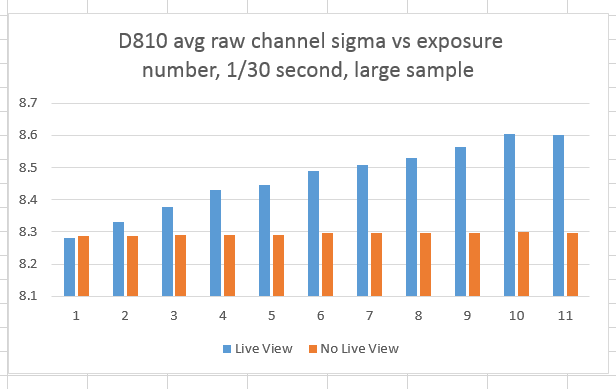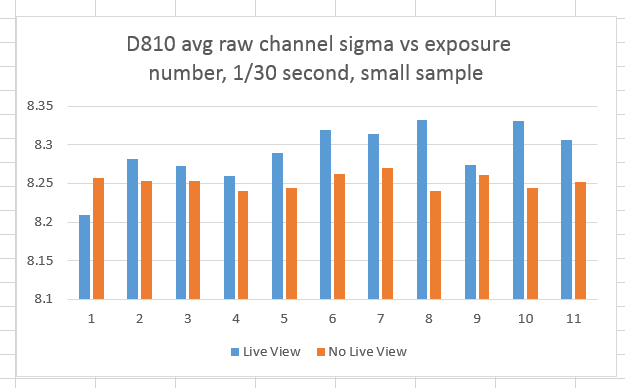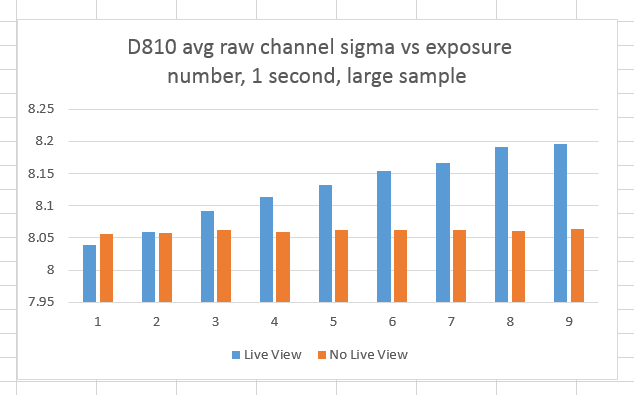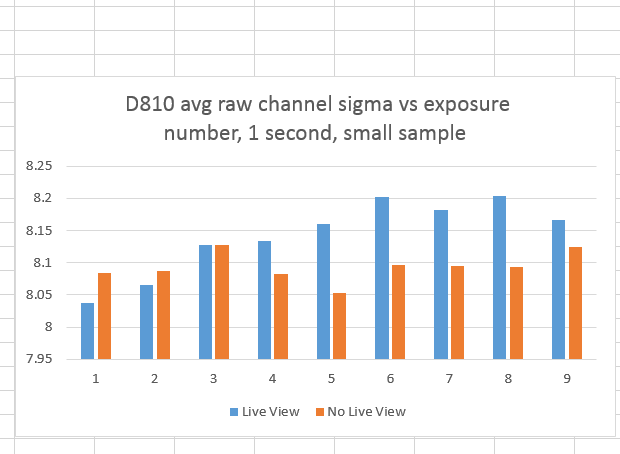A few days ago, I posted some graphs that indicated that using live view on the D810 had no material effect on dark-field noise. Several people have expressed interest in seeing the test repeated at longer shutter speeds.
I’ll repeat the protocol. In a 68-degree F (20 degrees Celsius) room, I set a D810 up in manual mode, with 14 bit raw file precision. I set the ISO to 800, which is the highest ISO on the D810 where there is no clipping of dark-field images. I set the shutter to EFCS at 1/30 second, the aperture to f/16, the shutter mode to single shot, and the exposure delay to 0. With the lens cap on, I made a series of several exposures with live view off, and another series about a minute apart with live view on. I repeated the test with the shutter speed set to 1 second, with long exposure noise reduction off.
I analysed the files in RawDigger, both for almost the entire frame, and for a 200×200 central area, averaging the standard deviation of the captures for all four raw channels.
The 1/30 second results:
Pretty much what we saw at 1/2000 second.
At one-second:
Well, that’s interesting. The effect is actually less at one second. That’s because the D810 has some non-defeatable long-exposure processing.




Jeffrey Goggin says
How about yet another round of testing, this time using much longer exposures still?
I’m primarily a nighttime photographer and my exposures typically range from 30 to 120 seconds, depending upon the subject and the format of camera I’m using (larger sensors = stopped down further = longer exposures.)
I also live in central Arizona, so heat management is a very real issue with some of the cameras I use, including even those without a live view facility, such as my Phase One P30+ back (during the hot summer months, I often have to let it cool for several minutes between exposures to keep the noise level down.)
I haven’t noticed any such issues with my Fuji X-Pro1, but I have a suspicion there might be a minor issue with heat-related noise with my Sony A7R, as I occasionally bracket my exposures and the last photo of the series sometimes appears to be ever-so-slightly noisier than the first photo.
Although I do have an engineering background, I am afraid I have no way of testing this for myself. (If it will help any, I’ll be happy to send you files shot to your specs. Just let me know…)
JG
P.S.: Great site … keep up the good work!
Jim says
I’ll post 30 second results tomorrow. If you can’t wait, look here:
http://www.dpreview.com/forums/post/55369710
Jim